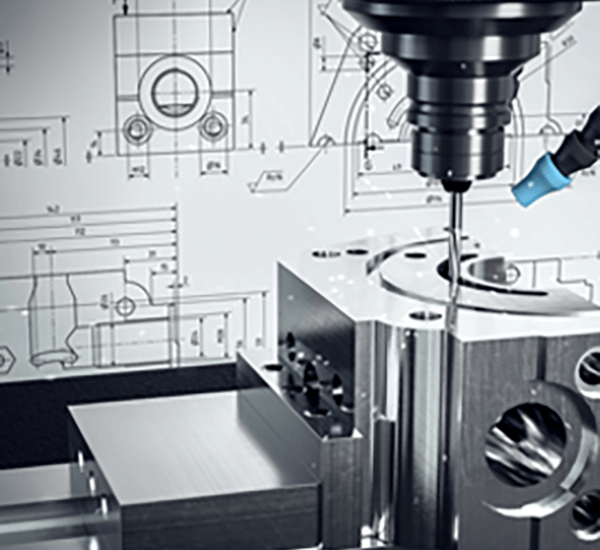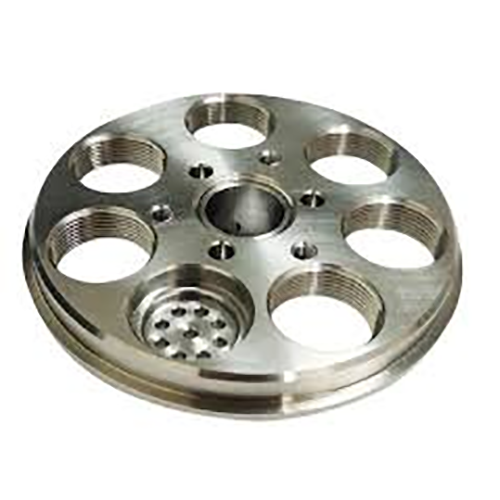
Securing exact surface quality on a machined component becomes necessary.
- Surface finish callouts in engineering drawings provide the exact specifications for the finish of a part
- Many specifications reference Ra, an average roughness metric, for surface measurement
- Comprehending finish specifications is crucial to meet operational standards
- Clear finish specification affects lubrication behavior, sliding resistance, and lifespan
- Careful reading of finish callouts enables achieving the planned outcome
Precision Principles of CNC Machining

Computer-controlled machining embodies a revolutionary manufacturing technique via numerical control software the system carves sophisticated geometries with precision.
- CNC systems permit manufacture of precise components from diverse substrates
- The versatility of CNC machining makes it ideal for aerospace, automotive, medical, and electronics
- CNC machining delivers exceptional repeatability ensuring identical parts across production runs
From early-stage prototyping through mass manufacturing CNC machining underpins modern fabrication
CNC Spec Interpretation
Grasping machine spec language may feel tough at first
Yet armed with basic knowledge and methodical steps you can manage technical specifications
Kick off by isolating primary specs such as rpm, feed, tolerance, workspace, controller
Every spec plays a role in determining machine performance.
Consider that higher spindle velocity suits pliant materials while elevated feed boosts capacity.
Appreciating such links enables selection of equipment fit for your objectives
Make sure to read supplier manuals attentively.
Those resources usually offer helpful explanations and clarify jargon
CNC Machines Explained: A Full Guide
CNC systems refer to programmed machine tools for accurate automated part production across materials Operation relies on parsing G-code directives to manage cutting devices and toolpaths.
- Various CNC platforms encompass milling centers, turning lathes, routers, plasma systems
- CNC machining processes are highly versatile and can be used to work with a wide range of materials including metals plastics wood and composites
- In addition these machines facilitate quick prototyping and short-run manufacturing for startups and labs
Core Concepts of CNC Machinery
They embody an integration of hardware accuracy and advanced software regulation CNC platforms apply programming to fabricate both basic components and complex assemblies The basic principle involves transforming CAD models into real-world components.
- Computer Numerical Control machining
- Digital design integration
This process involves a series of precise movements guided by the computer program Engineers contribute by setting machining variables, overseeing runs, and assuring product standards.
Significance of Surface Finish in CNC
Meeting set surface quality in CNC work is significant It changes how a part performs and how it looks Material characteristics, tool parameters, and finishing techniques affect texture.
Refined surfaces boost longevity; rough surfaces can diminish functional performance CNC machining processes offer a wide range of tools and techniques to achieve the specific surface finish for different applications.
- For example using different cutting tool geometries |PCD tools|surface speed choices to reach texture
- Also surface treatments such as grinding and polishing can refine textures
Understanding parameter influences helps attain the desired surface quality.
An Introduction to CNC Machine Operation
This precise method uses computer-guided machinery to sculpt components from diverse substrates These machines follow digital instructions to execute intricate designs with high accuracy and repeatability Knowing programming basics and tool selection secures better machining outcomes
Industry applications include aircraft, automotive, medical, electronics, and beyond From precision engine parts to detailed injection molds, CNC delivers complex products
Surface Finish Callouts for CNC Machined Parts
Proper specification of surface finish is crucial when machining parts on a CNC machine It ensures that the final product meets the requirements for function and aesthetics Surface finish callouts are typically represented using the system known as the Surface Roughness Ra This numerical value expressed in micrometers inches or millimeters indicates the average height of surface irregularities.
Account for desired texture and the component’s purpose when selecting finish

In many cases fine finishes are necessary for accurate alignment and tight interfaces
Rougher textures often suit parts intended for grip or high-friction contact
Leverage precise callout notation within drawings to indicate required finish State the Ra figure and any extra machining or finishing instructions required.
Remember that effective surface finish callouts are key to achieving a successful manufacturing outcome
Kinds of CNC Machines and Their Strengths
Machine shops deploy varied CNC equipment tailored to many distinct production tasks They pair with CAD software to translate designs into cutting commands for precise fabrication.
- Turning centers form shafts rods and cylindrical forms by cutting along axes
- Lathes excel at producing round parts such as shafts rods and bushings
- Beam and jet cutting methods enable accurate slicing with differing thermal impacts
Equipment choice hinges on material, design intricacy, and precision requirements Varied CNC functionalities equip manufacturers in industries from automotive to aerospace.
Achieving Premium Surface Results in CNC Processes
Securing excellent surface finish plays a key role in production and CNC methods enable that outcome With deliberate feed-speed-tool strategies professionals steer cutting dynamics to achieve smoother surfaces Plus durable cutting materials and appropriate coolant control boost finish quality Well-chosen cutting tactics plus careful setup empower manufacture of parts with exceptional surfaces.
Programming Strategies for Surface Finish
Controlling finish within programming is key to obtaining target surface results Feed selection spindle rpm and cutter geometry collectively determine texture outcomes Thoughtful parameter choices coupled with correct lubrication help produce polished surfaces.
- Furthermore regular tool maintenance and inspection are essential for what is acnc machines ensuring a consistent and high-quality surface finish over time Plus regular inspection and maintenance of tools copyright finishing standards Additionally routine tool checks and upkeep maintain consistent finish quality
- For ideal finishes weigh material choice, roughness spec and usage demands
- Path simulation offers insights to adjust cutting settings and reduce defects
- Additionally routine tool checks and upkeep maintain consistent finish quality
